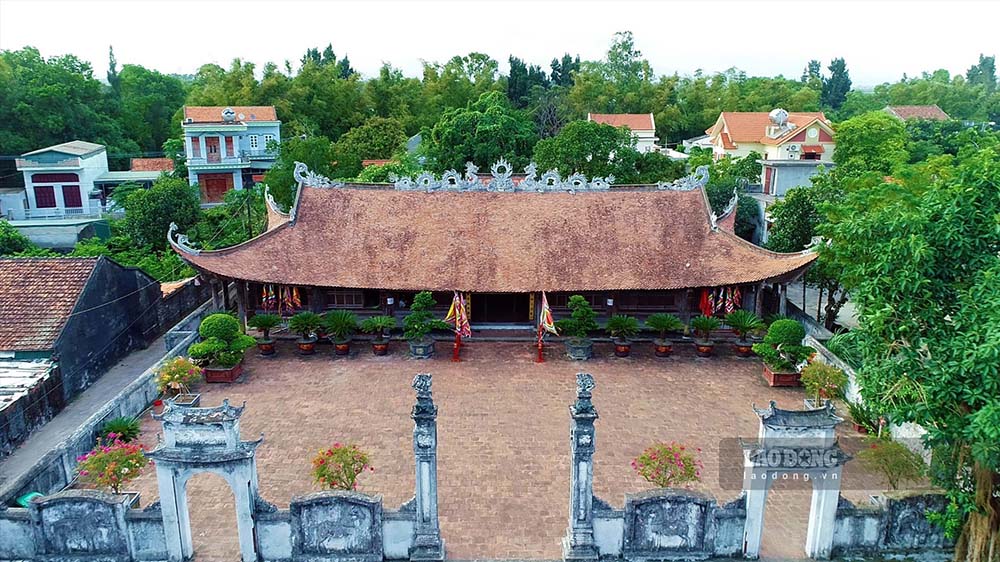
Tra Co Communal House - One of the most ancient places in Vietnam
1. The legend led to the birth of the Ancient Tea Festival
Tra Co communal house, located in Nam Tho area, Tra Co ward, Mong Cai city, Quang Ninh province was formed during the Later Le dynasty. Through many ups and downs of history, the communal house still stands tall and proud as a milestone of sovereignty and Vietnamese culture on the border.
According to history books, Tra Co communal house is associated with the legend "Tra Co people, Do Son ancestors". According to legend, in 1461, people working as fishermen from Do Son land (in present-day Hai Phong) often went with their families to earn a living in many remote sea areas, all the way to the estuary region (in Tra Co, Mong Cai today). During a storm, twelve families drifted onto a deserted peninsula with only tiger parrots and reeds. Unable to bear the hardships, six families returned to their old hometown, the remaining six families determined to cling to the land and build a new countryside. Initially just six simple houses, it gradually became a prosperous village.
Like many other villages, Tra Co communal house at that time was built by people contributing their money and contributions. After that, local people returned to their old hometown to ask for the feet of the village's tutelary gods to worship at Dinh (Khong Lo, Giac Hai, Nhan Minh, Huyen Quoc, Quang Trach). In addition, this is also the place to worship the six pioneers who made public discoveries and established the ancient Tra Co land.
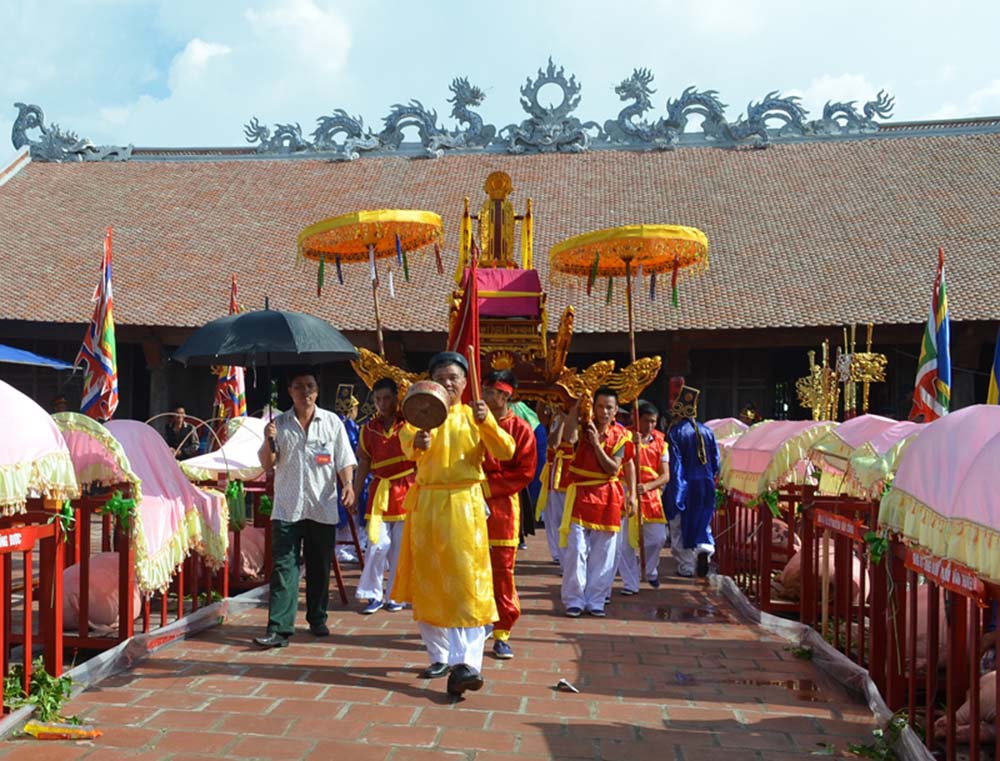
Since then, Tra Co communal house has undergone many major restorations. The most recent restoration was in 2012. The current communal house is built on a land area of more than 1000 square meters, facing south, with a nail-shaped architecture, including 05 rooms, 02 altars and 03 harem rooms, the structure is Traditional wooden architecture. The entire structure is constructed using wooden frames and interconnected by mortise dowels. The communal house is a majestic ancient structure, with a tiled roof and four curved corners like a boat sailing out to sea. In particular, the truss panels show strong, sophisticated, and vivid carvings. Rich themes include engravings of dragons rolling water and phoenixes flying, tigers stalking prey among flowers and leaves... Each engraving is a unique work of art. This is considered one of the communal houses with massive scale and unique architecture in the Northern Delta region.
At the communal house, many valuable artifacts are preserved such as: 03 bronze incense burners, 2 cranes riding on turtle heads made of wood lacquered with gold, 8 wooden thrones of the Nguyen Dynasty, 12 paper materials...
2. Main activities of the Tra Co Festival
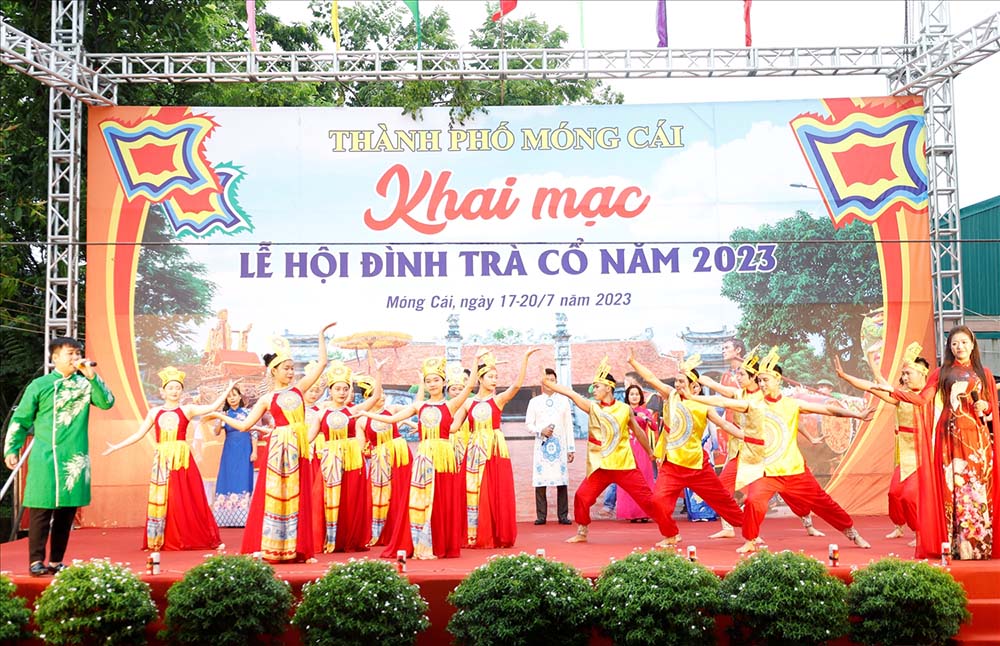
- Time to organize the Tra Co Festival
Every year, from the 1st to the 3rd day of the 6th lunar month, the people of Tra Co open a communal house to commemorate the merits of the Tutelary God. Tra Co village communal house is not only a place of spiritual activities but also a unique architectural work, a spiritual cultural milestone in the homeland. After a period of interruption due to war, in 1993, the Tra Co festival was restored and is still a cultural highlight and the pride of the people here.
In this traditional festival, unique customs typical of the Red River wet rice civilization are still preserved, with strict regulations on procedures, especially in appointing people to act as Mr. Dam, and taking care of uncles. In preparation for the ceremony, everyone still respectfully calls him "Mr. Elephant".
- Activities within the framework of the festival

Normally, before the main holiday, on May 25, there will be a boat procession from Tra Co to Do Son's ancestral hometown. On May 30, the boat from Do Son returned to Tra Co. And on June 1, the festival begins, starting with the procession of the King to the lake (also known as the procession of the king to the temple), with the ritual of an army holding weapons, magic flags, bowls of sound, eight treasures, Next is the flag bearer and must be a strong, young, beautiful and virtuous person who is elected at the end of the previous year's festival along with the palanquin bearers.
After the procession, there is a competition of livestock and crop products, mainly represented by the competition of pigs, which people call the Elephants. The Elephants are well cared for by the funeral leaders and villagers for many months before joining the festival. In addition, the unique feature of Tra Co festival is that there is a feast-making contest and a cooking contest. Anyone who can cook well is known by the whole village.
The 6th is the end of the festival, at this time there is also a cotton dance performance. On this day, people pray to heaven, earth, and gods to support them in catching lots of fish and shrimp, prosperous trade, lush livestock and farming, and a prosperous and happy life.
- The "Mr. Elephant" contest is the highlight of the Tra Co Festival
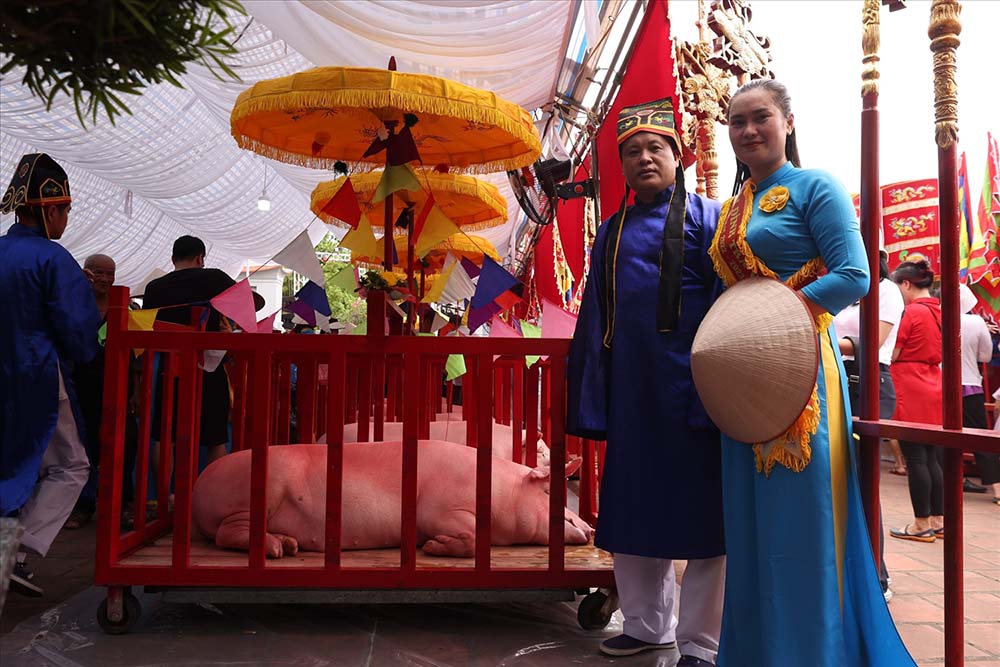
This "Mr. Elephant" contest is a contest between 12 pigs raised and cared for by 12 "masters" - representing the 12 pioneers who were instrumental in discovering Ancient Tea. According to ancient custom, before the festival, Tra Co village meets to choose 12 people, called "counsels", to prepare to raise pigs for next year's festival.
The "ruler" must be middle-aged, healthy, know how to do business, have ethics and a healthy lifestyle, have a harmonious family, and have no funerals or funerals. The "leaders" chosen by the village are also very honored and proud. Because according to ancient beliefs, the family that does a good job of "ruling the wedding" will be prosperous, healthy, and prosperous.
From the beginning of the year, each "leader" will raise a pig. After buying it home, this pig is no longer called a pig but is called "Mr. Elephant", considered the mascot of the house and the village. "Mr. Elephant" is well cared for, eats and sleeps in a separate, clean, hot cage with a fan, and sleeps under a mosquito net.
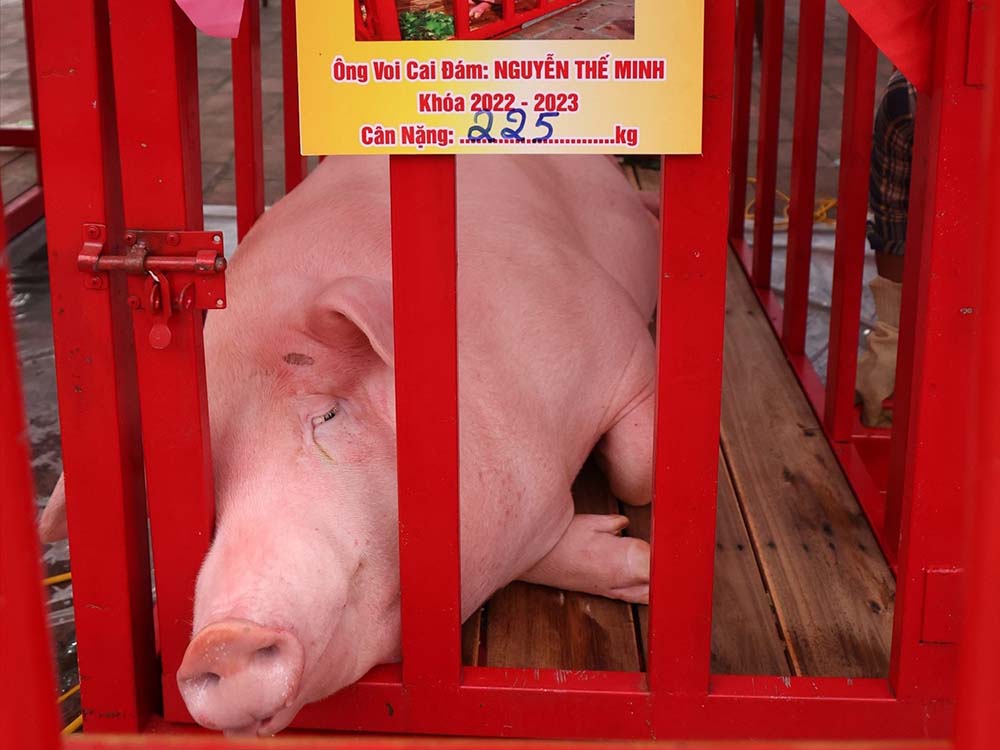
On the afternoon of the 30th day of the 5th lunar month, after the ancestral sacrifice ceremony, "Mr. Elephant" was cleaned by the "bureaucrats" and placed in red painted cots with curtain roofs. After that, 12 "Elephants" were taken by the "procession leaders" to the communal house yard and lined up in two rows to worship the god. The "Mr. Elephants" are arranged in order, the Chief "ruling the crowd" is first on the right, the Deputy "ruling the crowd" is first on the left. On each side, 6 men line up in front of the communal house door to worship the gods.
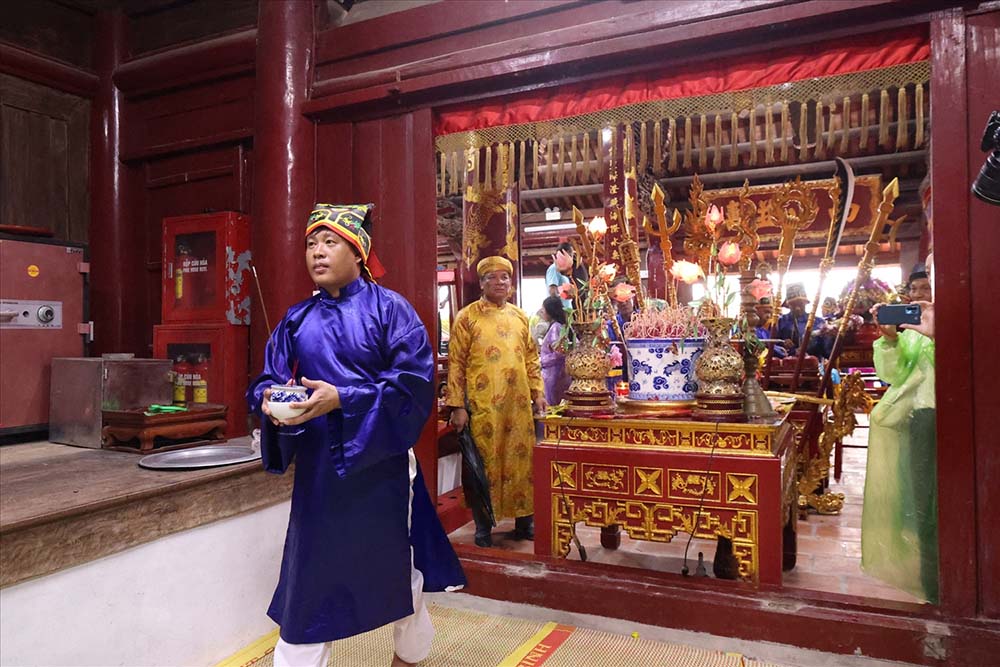
Tra Co Festival not only shows people's gratitude and remembrance to the Tutelary Gods, but also shows people's awareness and responsibility in participating in protecting and building an increasingly prosperous border. strong. In addition to Tra Co festival, when traveling to Quang Ninh, visitors can also participate in other equally attractive activities such as Ba Vang Pagoda festival, Ha Long Carnaval festival, Bach Dang festival,... rich in character. Tradition is a beauty in Vietnamese national culture.
